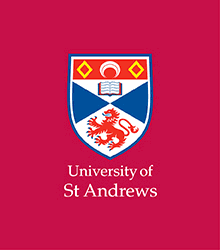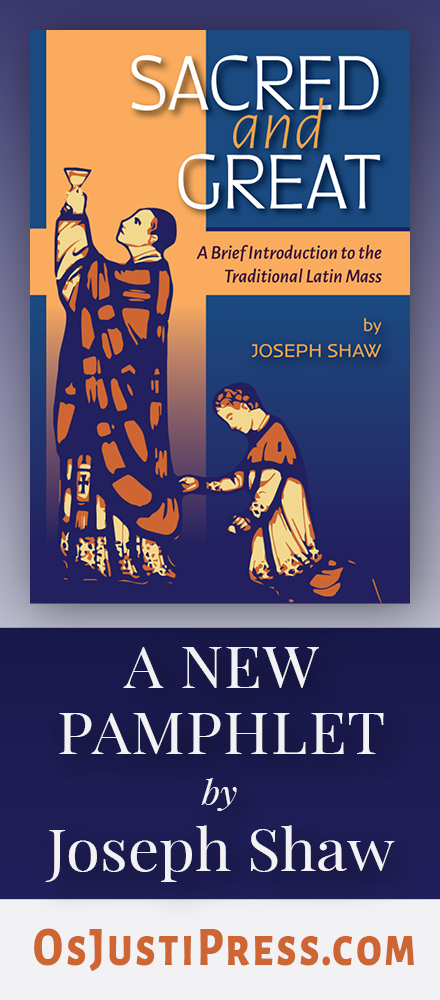Our thanks once again to Prof William A Thomas for his report on the final day of the Fota liturgical conference, which took place this past week in Cork, Ireland.
On the final day of the 12th Fota International Liturgical Conference, the first speaker was Fr Manfred Hauke, Professor at the Univ. of Lugano in Switzerland, who delivered a paper titled “What is an exorcism, a critical assessment of terminology”
Fr Hauke began by clarifying the etymologies of the terms he would use to describe the language employed in the rite of exorcism, and further that only an ordained minister with the authority of Christ can perform an exorcism. In 1985, the Congregation for the Doctrine of Faith admonished “prayer groups in the Church (which) aimed at seeking deliverance from the influence of demons, while not actually engaging in real exorcisms.” Here the imperative form is the determinative sign for liturgical exorcism; Jesus commands that unclean spirits depart and they obey. If we are to clarify the definition of “exorcism” from a linguistic point of view in a ritual context even before Christianity, the technical term seems to imply addressing oneself to the evil spirit in a direct way.
The new ritual of exorcism, however, does not compel the exorcist to use any imperative against the evil spirits. It is possible to choose between a “deprecatory” or “supplicating” formula and an “imprecatory” or “imperative” formula. The imperative formula can be used only when the deprecatory formula has been recited before. Is this deprecatory text a real exorcism, or is it only a “prayer for deliverance”?
The decisive factor for Jewish exorcism is the invocation of the name of God. The exorcisms performed by Jesus are not “prayers for deliverance”, but commands made in force of His being the Son of God. His practice manifests itself in the mission of the apostles, as for example in the exorcism performed by St Paul, who also commanded demons (Acts 16, 16-19). Exorcism, in Christian understanding, is a command in the name of Jesus Christ to a demon to leave his victim.
In the Rituale Romanum of 1614 we find an alternation between “exorcismi” and “orationes”. The latter are prayers, the former are commands given with imperatives to demons. The orationes have a conclusive role, whereas in the rite of 2004 similar prayers appear as “deprecatory formula” of exorcism and are located at the beginning.
The decisive point for liturgical praxis is the expulsion of demons, which cannot be separated from the prayer of the Church. But the use of the imperative form witnesses in a clearer way the authority given by Christ to his ministers to liberate vexed persons from the evil spirits. In the liturgy of exorcism, we find the invocation of the name of God or Christ (epiclesis), the direct address to the devil, who is menaced in the name of God (increpatio), and the command to leave the afflicted person. It would be fitting that the definition of “exorcism” matches this liturgical description, which implies the invocation of the divine name and the direct address to the devil. It is not enough to define “exorcism” as “expulsion of evil spirits” in the name of Christ; “exorcism” in a strict sense implies also the command to the demons to leave.
The second paper of the day followed a Solemn High Mass in the church of Ss Peter and Paul’s, celebrated by Fr Jerome Buecker FSSP, and was presented by His Eminence Raymond Cardinal Burke, entitled “The Juridical Structures for the Rite of Exorcism.” Highlighting the differences between the 1917 Code of Canon Law and the 1983 Code in use today, he said that many priests are turning back to the Rituale Romanum of 1614 because the new rite of 1999, amended in 2004, is lacking, in that it does not require that the sign of the Cross be made over the person or objects to be blessed, and likewise, does not have the proper blessing and exorcism of water and salt for the making of holy water.
Speaking further on sacramentals and blessings, he mentioned the orations, of which there were six types: prayer, touch (with water and oil), blessed foods, penance and the Confiteor, almsgiving and showing mercy, and blessings. A blessing is the invocation of the Divine Name, Jesus. Demonic possession might also manifest itself in vexations, temptations, even to places and objects, but there were established procedures on how to deal with them, assigned to competent and duly authorized clerics, and not the laity.
In the final paper of the conference, Fr Sven Conrad FSSP spoke on “The Apotropaic Effect of the Sacred Liturgy”, i.e. of the liturgy as such, beyond its formal exorcisms. The Church continues Christ’s mission through the Liturgy; this understanding not only comes from the writings of Pope Pius XII but also from the Second Vatican Council. The scholastic doctrine of sacramentals, which effect what the Church intends them to do, traditionally identifies the fight against Satan as one of their main effects. In this context, Fr Conrad briefly examines the Divine Office and Holy Mass and emphasizes their apotropaic effect (the warding off of evil), critically naming some principles of the reform of the rite of blessings and some deficiencies of contemporary theology of liturgy.
Sacramentals are not the conduit for sanctifying grace, in the way the Sacraments are; the Rite of Exorcism is not a sacrament like baptism or Confession, but rather a sacramental, whose apotropaic effects are healing and the guidance of the Holy Spirit in one’s life. The first effect of the sacramentals used in exorcism to expel demons is through the power of the Cross and in the Holy Name of Jesus.
 |
| Cardinal Burke introduces Prof. Hauke. |
The new ritual of exorcism, however, does not compel the exorcist to use any imperative against the evil spirits. It is possible to choose between a “deprecatory” or “supplicating” formula and an “imprecatory” or “imperative” formula. The imperative formula can be used only when the deprecatory formula has been recited before. Is this deprecatory text a real exorcism, or is it only a “prayer for deliverance”?
The decisive factor for Jewish exorcism is the invocation of the name of God. The exorcisms performed by Jesus are not “prayers for deliverance”, but commands made in force of His being the Son of God. His practice manifests itself in the mission of the apostles, as for example in the exorcism performed by St Paul, who also commanded demons (Acts 16, 16-19). Exorcism, in Christian understanding, is a command in the name of Jesus Christ to a demon to leave his victim.
In the Rituale Romanum of 1614 we find an alternation between “exorcismi” and “orationes”. The latter are prayers, the former are commands given with imperatives to demons. The orationes have a conclusive role, whereas in the rite of 2004 similar prayers appear as “deprecatory formula” of exorcism and are located at the beginning.
The decisive point for liturgical praxis is the expulsion of demons, which cannot be separated from the prayer of the Church. But the use of the imperative form witnesses in a clearer way the authority given by Christ to his ministers to liberate vexed persons from the evil spirits. In the liturgy of exorcism, we find the invocation of the name of God or Christ (epiclesis), the direct address to the devil, who is menaced in the name of God (increpatio), and the command to leave the afflicted person. It would be fitting that the definition of “exorcism” matches this liturgical description, which implies the invocation of the divine name and the direct address to the devil. It is not enough to define “exorcism” as “expulsion of evil spirits” in the name of Christ; “exorcism” in a strict sense implies also the command to the demons to leave.
Solemn Mass at the church of Ss Peter and Paul, Monday, July 8th
The second paper of the day followed a Solemn High Mass in the church of Ss Peter and Paul’s, celebrated by Fr Jerome Buecker FSSP, and was presented by His Eminence Raymond Cardinal Burke, entitled “The Juridical Structures for the Rite of Exorcism.” Highlighting the differences between the 1917 Code of Canon Law and the 1983 Code in use today, he said that many priests are turning back to the Rituale Romanum of 1614 because the new rite of 1999, amended in 2004, is lacking, in that it does not require that the sign of the Cross be made over the person or objects to be blessed, and likewise, does not have the proper blessing and exorcism of water and salt for the making of holy water.
Speaking further on sacramentals and blessings, he mentioned the orations, of which there were six types: prayer, touch (with water and oil), blessed foods, penance and the Confiteor, almsgiving and showing mercy, and blessings. A blessing is the invocation of the Divine Name, Jesus. Demonic possession might also manifest itself in vexations, temptations, even to places and objects, but there were established procedures on how to deal with them, assigned to competent and duly authorized clerics, and not the laity.
In the final paper of the conference, Fr Sven Conrad FSSP spoke on “The Apotropaic Effect of the Sacred Liturgy”, i.e. of the liturgy as such, beyond its formal exorcisms. The Church continues Christ’s mission through the Liturgy; this understanding not only comes from the writings of Pope Pius XII but also from the Second Vatican Council. The scholastic doctrine of sacramentals, which effect what the Church intends them to do, traditionally identifies the fight against Satan as one of their main effects. In this context, Fr Conrad briefly examines the Divine Office and Holy Mass and emphasizes their apotropaic effect (the warding off of evil), critically naming some principles of the reform of the rite of blessings and some deficiencies of contemporary theology of liturgy.
Sacramentals are not the conduit for sanctifying grace, in the way the Sacraments are; the Rite of Exorcism is not a sacrament like baptism or Confession, but rather a sacramental, whose apotropaic effects are healing and the guidance of the Holy Spirit in one’s life. The first effect of the sacramentals used in exorcism to expel demons is through the power of the Cross and in the Holy Name of Jesus.























